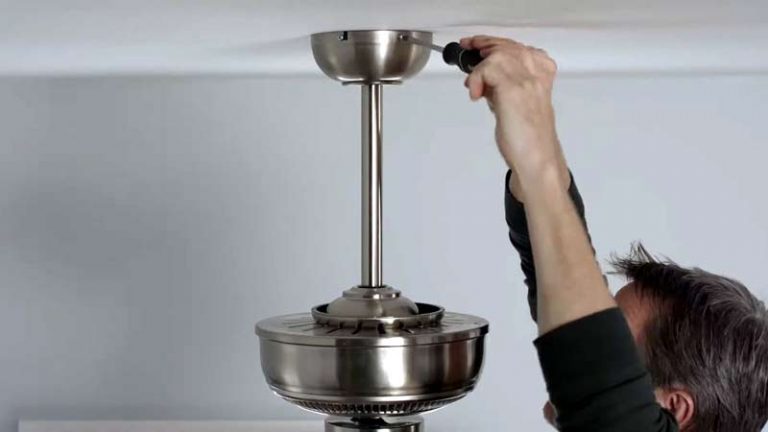Leaning Utility Pole? Don’t Ignore This URGENT Warning Sign
That utility pole outside your window has been a silent fixture for years. But now, something is different. It’s leaning. At first, it’s a subtle tilt you might dismiss, but a leaning utility pole is far more than an aesthetic issue; it’s a critical warning sign of potential danger to your property, your family, and your neighborhood.
Ignoring it is a risk you cannot afford to take. A leaning pole signals underlying problems that could escalate quickly, leading to power outages, property damage, or even life-threatening situations. This guide will walk you through the causes, the hidden dangers, and the exact steps to take to resolve the problem safely and efficiently.
You'll Learn About
Why Is My Utility Pole Leaning? Uncovering the Root Causes
Utility poles don’t lean without a reason. The tilt is a symptom of a deeper issue compromising the pole’s stability. Understanding these causes is the first step in appreciating the urgency of the situation. The reasons often fall into two main categories: natural forces and structural failures.
Natural Forces at Play
The environment is a powerful and constant force acting on these structures. Soil saturation from heavy rain or flooding is a primary culprit. When the ground becomes waterlogged, it loses its ability to firmly hold the base of the pole, allowing it to shift and tilt under the immense weight it supports.
Severe weather events like high winds from hurricanes, tornadoes, or intense storms exert tremendous pressure on both the pole and the lines it carries. This force can cause the pole to lean or even snap. Similarly, subtle ground shifting from erosion or changes in soil conditions over time can gradually undermine a pole’s foundation, leading to a slow, almost imperceptible lean that worsens over months or years.
Man-Made and Age-Related Issues
Not all causes are natural. Vehicle impacts are a frequent and sudden cause of leaning poles. A car, truck, or piece of construction equipment striking a pole can immediately compromise its structural integrity and position.
Beyond sudden impacts, the simple passage of time takes its toll. Many utility poles are made of wood, which is susceptible to age-related deterioration, such as wood rot, particularly at the ground line where moisture is most prevalent. This decay weakens the base, making the pole unstable. Insect damage from termites or carpenter ants can also hollow out the pole from the inside, severely weakening its structure.
The Hidden Dangers: More Than Just a Leaning Pole
A leaning utility pole is a clear and present danger that extends beyond the immediate risk of it falling. The consequences can be severe, impacting everything from your personal safety to your essential services. Recognizing these threats underscores why immediate action is necessary.

The Immediate Risks You Can’t Afford to Ignore
The most obvious danger is a complete structural failure, causing the pole and its heavy equipment to fall. This can result in catastrophic damage to your home, vehicles, or other structures on your property. More importantly, a falling pole poses a direct threat of serious injury or death to anyone in the vicinity.
Leaning poles also create significant electrical hazards. The tilt puts immense strain on the power lines and connections. This can lead to downed power lines, which are incredibly dangerous and can electrocute anyone who comes near them. Furthermore, damaged lines or transformers can spark, creating a substantial fire risk for your home and surrounding properties.
Even if the pole doesn’t fall, its precarious position can lead to service disruptions. The tension on the lines can interrupt your power, internet, and cable services, causing significant inconvenience. A leaning pole is a weak point in the utility grid, threatening the reliability of essential services for your entire neighborhood.
The Silent, Long-Term Threats to Your Property
Beyond the immediate, dramatic dangers, a leaning pole introduces more subtle, long-term problems. The constant, uneven tension on the service drop—the lines running from the pole to your house—can damage your home’s electrical mast or siding over time. This can lead to costly repairs that may not be immediately obvious.
A leaning pole can also become a point of contention regarding property lines and utility easements. It can affect your property’s curb appeal and may even lower its value, as potential buyers will see it as a significant, unresolved safety issue. The base of a shifting pole can also disrupt underground drainage or put pressure on nearby foundations, creating problems that are invisible on the surface but can cause significant structural issues later on.
Your Action Plan: What to Do When You Spot a Leaning Pole
Seeing a leaning utility pole can be alarming, but a calm, methodical response is the key to ensuring safety. Do not attempt to fix the problem yourself. Follow these steps to report the issue correctly and protect yourself and your property.
Step 1: Assess the Situation (From a Safe Distance)
Your top priority is safety. Stay at least 35 feet away from the pole and any associated wires. Never, under any circumstances, touch the pole, its guy wires, or any cables hanging from it. Treat all lines as if they are live and energized.
From a safe distance, look for signs of immediate danger. Are there visible sparks, smoke, or fire? Do you hear cracking or buzzing sounds? Are any power lines hanging low or touching the ground? If you observe any of these emergency signs, your first call should be to 911 to report an immediate public hazard.
Step 2: Identify the Pole’s Owner
Not all poles are owned by the same entity. Most poles have a metal tag or plaque with identification numbers and often the owner’s name. The company with its equipment attached highest on the pole is typically the owner—usually the electric company.
Other lines for telephone, cable, and internet are located further down the pole. Identifying the owner helps you report the problem to the correct authority, which speeds up the response time. The table below can help you determine who to contact.
| Equipment/Line Location | Likely Owner | Common Company Names |
|---|---|---|
| Topmost wires, large insulators, transformers | Electric Utility | (e.g., PG&E, Con Edison, Duke Energy, FirstEnergy) |
| Middle wires, smaller cables | Telephone/Fiber Internet Company | (e.g., AT&T, Verizon, Lumen) |
| Lowest wires, coaxial cables | Cable Television/Internet Provider | (e.g., Comcast/Xfinity, Charter/Spectrum, Cox) |
Step 3: Document Everything Meticulously
Before you make the call, gather as much information as possible. Strong documentation will help the utility company understand the severity and urgency of the situation. This is a critical step that many people overlook but can make a significant difference in the response.
Take clear photos of the pole from several angles to show the lean. For powerful evidence, hold a level up in the frame of the photo to visually demonstrate that the pole is not vertical. Take close-up shots of the pole’s identification tag, any visible cracks, wood rot at the base, or soil erosion. Note the date and time, and keep a written log of your observations. This creates a clear record of the hazard.
Step 4: Make the Call and Follow Up
With your documentation ready, contact the pole’s owner. Use their dedicated emergency or maintenance phone number, not the general customer service line. Clearly state your address, the nearest cross street, and the pole’s identification number.
Describe the situation calmly and accurately, mentioning that the pole is leaning and detailing any signs of immediate danger you observed. Crucially, ask for a reference or ticket number for your report. This is your proof of contact and is essential for follow-up. If you don’t receive a response or see any action within a reasonable timeframe (which can vary from a few hours for emergencies to a couple of weeks for non-critical leans), call back and reference your ticket number to escalate the issue.
What to Expect After You Report the Leaning Pole
Once you’ve reported the leaning pole, the utility company will initiate its own process. Understanding this process can help you manage your expectations regarding the timeline and the solution. It is rare for a homeowner to bear responsibility for the pole itself, as it is almost always owned by the utility.
The Utility Company’s Response Process
The company will first dispatch a technician to perform an initial assessment. This expert will evaluate the pole’s condition, the severity of the lean, and the immediate risk to the public and property. Based on this assessment, the issue will be prioritized.
A pole that is sparking, cracking, or leaning precariously over a house or road will be classified as an emergency requiring immediate attention. A pole with a minor, stable lean may be scheduled for repair or replacement at a later date. It is not uncommon for a utility company to determine a pole is not an immediate threat, even if it has a visible lean. However, your documentation can be crucial in arguing for a higher priority.
Depending on the situation, the company may implement a temporary or permanent fix. A temporary solution might involve installing guy wires to stabilize the pole until a full replacement crew can be scheduled. A permanent solution involves replacing the pole entirely, which is a complex job that requires coordination to manage the various electrical and communication lines.
Understanding Utility Easements and Your Rights
Utility poles are typically located within a legal area known as a utility easement. This easement grants the utility company the right to access a specific portion of your property to install, maintain, and repair its equipment. You cannot build permanent structures, such as sheds or pools, within an easement, as this would block their access.
The existence of an easement means the utility company is responsible for the maintenance of its equipment, including the pole. You are not liable for the cost of repairing or replacing it. It’s also important to recognize that old, decommissioned poles should never be repurposed for projects. For instance, building a telephone pole retaining wall is a toxic mistake, as the creosote and other chemicals used to treat the wood can leach into your soil and pose a health hazard.
Proactive Measures and Prevention
While you can’t prevent a hurricane or stop a car from hitting a pole, there are small, proactive steps homeowners can take to help maintain the integrity of utility poles on or near their property and ensure safety.
Keep the base of the pole clear of debris, mulch, and dense vegetation. Piling soil or mulch against a wooden pole can trap moisture and accelerate rot at the ground line, which is its most vulnerable point. Also, never attach anything to a utility pole. Items like basketball hoops, signs, or birdhouses can obstruct access for line workers and compromise their safety. Attaching personal items is strictly forbidden and dangerous; for securing things to your own home safely, it’s better to research proper methods, such as learning about renter-friendly mirror hanging techniques that prevent wall damage.
Be vigilant about any digging or construction activity near a utility pole. Excavation can disturb the soil and weaken the pole’s foundation. If you see such activity, ensure the workers are aware of the pole and are taking precautions not to undermine its stability.
Finally, perform regular visual checks. A quick glance at the pole after a major storm or every few months can help you spot a developing lean early, allowing you to report it before it becomes a crisis. Your vigilance is a key part of the community’s collective safety net.

